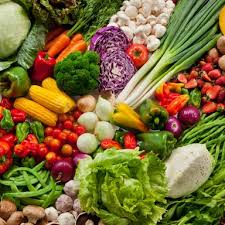Stamp: ㄥand Onion (Taiwan (Republic of China) 2024)
ㄥand Onion (Taiwan (Republic of China) 2024)
27 March (Taiwan (Republic of China) ) within release Phonetic Symbols (Series 4) (2024) goes into circulation Stamp ㄥand Onion face value 6 Taiwanese new dollar
| Stamp ㄥand Onion in catalogues | |
|---|---|
| Colnect codes: | Col: TW 2024.03.27-01f |
Stamp is square format.
stamp from se-tenant block of 10Also in the issue Phonetic Symbols (Series 4) (2024):
- Se-tenant - Phonetic Symbols (Series 4) face value 10*6;
- Full Pane - Phonetic Symbols (Series 4) face value 20*6;
- Stamp - ㄏㄠˇ and Mail Boxes face value 6;
- Stamp - ㄐ一ˊ and Stamp Collecting face value 6;
- Stamp - ㄠand Bridge over Lake Jiuqu face value 6;
- Stamp - ㄡand Watermelon face value 6;
- Stamp - ㄢand Fortress of Dawulun face value 6;
- Stamp - ㄣand Statue of Wind Lion Lord face value 6;
- Stamp - ㄤand Cantaloupe face value 6;
- Stamp - ㄥand Onion face value 6;
- Stamp - ㄦ and Locomotives face value 6;
- Stamp - ㄧㄡˊ and Mail Truck face value 6;
Stamp ㄥand Onion it reflects the thematic directions:
Language is a structured system of communication that consists of grammar and vocabulary. It is the primary means by which humans convey meaning, both in spoken and written forms, and may also be conveyed through sign languages. Human language is characterized by its cultural and historical diversity, with significant variations observed between cultures and across time. Human languages possess the properties of productivity and displacement, which enable the creation of an infinite number of sentences, and the ability to refer to objects, events, and ideas that are not immediately present in the discourse. The use of human language relies on social convention and is acquired through learning.
A map is a symbolic depiction emphasizing relationships between elements of some space, such as objects, regions, or themes. Many maps are static, fixed to paper or some other durable medium, while others are dynamic or interactive. Although most commonly used to depict geography, maps may represent any space, real or imagined, without regard to context or scale, such as in brain mapping, DNA mapping, or computer network topology mapping. The space being mapped may be two dimensional, such as the surface of the earth, three dimensional, such as the interior of the earth, or even more abstract spaces of any dimension, such as arise in modeling phenomena having many independent variables. Although the earliest maps known are of the heavens, geographic maps of territory have a very long tradition and exist from ancient times. The word "map" comes from the medieval Latin Mappa mundi, wherein mappa meant napkin or cloth and mundi the world. Thus, "map" became the shortened term referring to a two-dimensional representation of the surface of the world.
Vegetables are parts of plants that are consumed by humans or other animals as food. The original meaning is still commonly used and is applied to plants collectively to refer to all edible plant matter, including the flowers, fruits, stems, leaves, roots, and seeds. An alternative definition of the term is applied somewhat arbitrarily, often by culinary and cultural tradition. It may exclude foods derived from some plants that are fruits, flowers, nuts, and cereal grains, but include savoury fruits such as tomatoes and courgettes, flowers such as broccoli, and seeds such as pulses.



